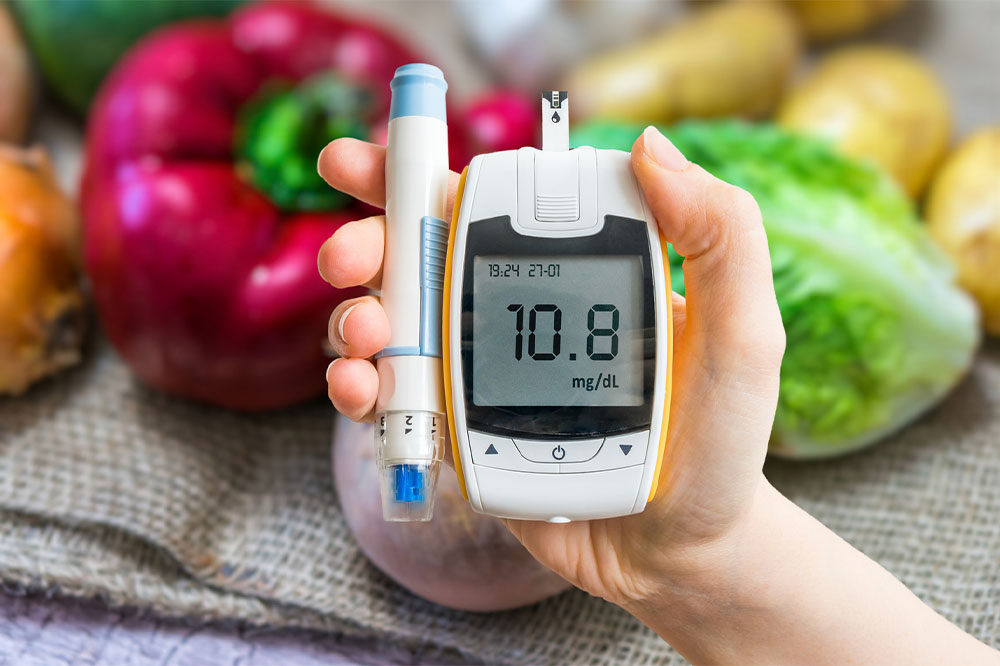
Diabetes – Signs, types, and ways to manage it
The foods we eat are broken down into sugar, which is released into the blood. The rise in blood sugar signals the pancreas to produce insulin to use blood sugar for energy. However, sometimes, the body cannot produce enough insulin or use it efficiently, which leads to diabetes, a condition characterized by high blood sugar. Here are the signs, types, and causes of diabetes and how to manage it with treatment and other methods.
Signs and symptoms
The two most common types of diabetes are type 1 and type 2 diabetes. The symptoms in each type vary based on glucose concentration in the blood. But the common ones include fatigue, irritability, increased thirst, frequent urination, extreme hunger, and blurry vision. Some also experience infections of the gums or skin and dry mouth.
The symptoms of type 2 diabetes may show up after years. These include yeast infections between the toes and fingers, in and around reproductive organs, and under the breasts. Decreased healing of sores or cuts due to nerve damage from high blood sugar is also common. Some experience numbness or pain in the feet or legs due to nerve damage. These symptoms usually occur when the glucose levels have been high for a long time.
Types and causes of diabetes
The cause of diabetes can differ based on the type:
Type 1 diabetes
The exact cause of type 1 diabetes is not clear. The disease causes the immune system to destroy the insulin-producing cells in the pancreas, which affects healthy insulin levels. Type 1 diabetes usually develops during childhood.
Type 2 diabetes
In type 2 diabetes, the body’s cells become resistant to insulin, leading to increased blood sugar levels. However, the trigger of such resistance is unknown. Type 2 diabetes is more common than type 1, and it usually develops in those over 45 years.
Gestational diabetes
This lesser-known type of diabetes may develop in pregnant women who have never had diabetes. The placenta produces certain hormones during pregnancy that make the cells more resistant to insulin. Sometimes, the pancreas cannot produce more insulin to counter the effects of these hormones, leading to high blood sugar. However, gestational diabetes is usually temporary.
How to manage diabetes
Those diagnosed with diabetes need to start managing it immediately to avoid complications. Doctors usually recommend a combination of the following methods after considering the type of diabetes, the patient’s age, blood sugar levels, and other factors:
Treatment options
Treatment is a must for severe diabetes. Monitoring blood sugar levels at least four times a day can help keep blood sugar in check. Insulin therapy is recommended to regulate blood sugar, especially for type 1 diabetics. There are various types of insulin, such as short-acting, long-acting, rapid-acting, and intermediate alternatives. Oral treatments, pancreatic transplantation, and bariatric surgery are other options.
Eat healthy foods
While there is no specific meal plan for diabetes, eating healthy foods can help strengthen the immune system. A healthy immune system can help prevent diabetes and curb complications like heart disease. Foods high in nutrition and fiber like fruits, whole grains, vegetables, eggs, and fatty fish are recommended. However, patients must exercise portion control and space out their meals evenly.
Avoid trigger foods
Certain foods can cause blood sugar to rise and lead to severe symptoms. A few examples include sweetened beverages, fruit-flavored yogurt, and trans fats. Patients must keep these foods out of their meal plans to prevent diabetes or control its symptoms. If unsure, patients can consult a doctor to help them develop a nutrition plan based on their blood sugar levels.
Lifestyle changes
Simple exercises like riding a bike or walking for about 30 minutes can help regulate blood glucose levels. One must also learn to relieve stress through yoga, deep breathing, and other breathing techniques because stress is a common trigger of heightened blood sugar levels. Furthermore, it is essential to go for regular health checkups to monitor progress and look for potential diseases.




